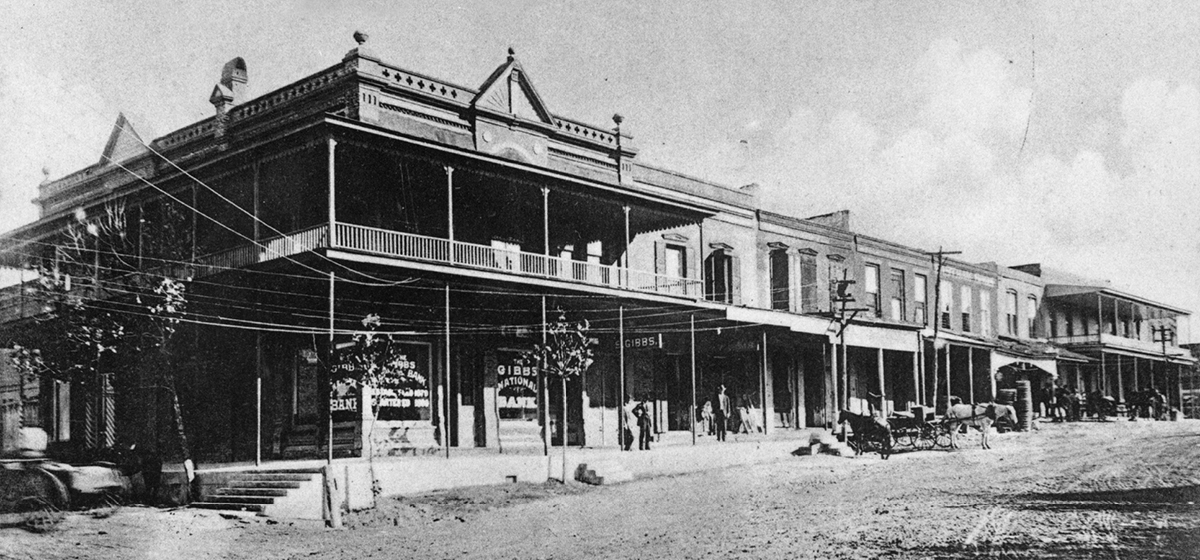Stories. We all have them. They are what life is made of. How often while sitting in conversation does some tidbit of information help us recall a story from our own life?
One Texas company has taken these reflections on things important to us and turned them into their life’s work. In 1954, James Avery started his jewelry business in his mother-in-law’s two-car garage with about $250 in capital. He built a small workbench, then bought a few hand tools and some scraps of silver and copper. He didn’t consider himself a jeweler, 
During this conversation, we all shared how we ended up following different paths than expected, and Chris said, “I understand. I started out in medicine, so this is the last thing I ever thought I would do.”
 That’s surprising! How far did you get into medicine before making the career switch?
That’s surprising! How far did you get into medicine before making the career switch?(Smiling) Actually, pretty far. I wanted to be in orthopedic surgery and planned to be a hand surgeon. I was in an orthopedic program/residency. When our first child was born, he developed some trouble breathing and required a tracheotomy from the time he was about 5 weeks of age until he was 3. When that happened, I took a leave of absence to help care for him and did ER work to help support us. Once he was better, I had a chance to go back into orthopedics, but I had lost about 3 years. During rotations, I realized I loved anesthesia and the cardiovascular and pulmonary physiology, so I applied for a program in San Antonio which was where I started my orthopedic residency. After that, I came back to Kerrville to practice and ran the anesthesia program here for about five years. I loved it and did a lot of work in ICU and critical care. I never thought I’d do anything else.


I saw a lot of potential for the business that could be done differently and positively to improve what dad had built, so that was challenging to me. I like the idea of having a goal and doing good things to see if you can get there. After about three or four years, there were still quite a lot of things I wanted to do and achieve; realistically, it took about seven or eight years before we had a really good team in place, with the business on a good trajectory. At that time, I could have gone back into medicine, but we had two younger kids in elementary school. I was involved in all their activities, coaching, and being part of their life…and you often have to give that up when you’re in medicine. I had missed the first ten years of our first son’s life because of it, and I didn’t want to miss it again. It was a hard moment to think that I really wasn’t going to go back to my dream job, but it was the right decision. When I started out, the business was about $20 million a year in revenue, and this year we’re going to do about $250 million.
It’s always easy for me to remember how old the company is. We were both born the same year. The company began in 
 Is your dad still involved?
Is your dad still involved?He still has his office here and comes up once a week for a few hours, just to stay in touch. He’s now 94, so he’s not involved in the day-to-day aspects anymore.

That was one of the first things I saw that needed to be addressed. I realized about 95% of the line items were Dad’s. In planning for the future of the company, it was important to realize we needed to plan for design succession, so I took over the reins of daily operation and allowed Dad to focus on design. We beefed up the design staff and allowed them to learn under him. It was an interesting time and our biggest risk. The creative side is the lifeblood of our organization.
I want them to think of a company that really cares about who they are as customers—that when they buy from us, they are going to be treated with genuineness. They are going to get designs that are well-made and well-crafted, and I hope they will be meaningful to them and a story in their lives. I’d like words like trust, caring, quality, integrity–all of those come to mind—but mostly I hope it’s something they treasure.
 The first design done by James Avery was a cross, and faith-based designs are still a large part of what you do. Has there been any pushback from new designers about that?
The first design done by James Avery was a cross, and faith-based designs are still a large part of what you do. Has there been any pushback from new designers about that?That’s a good question, but no there hasn’t. When people come to work for us, they know this is who we are. This is our foundation. We are guided by faith and Christian principles. Those values are what this company is founded on. Faith-based designs are an integral part of our line. It’s funny we have been referred to as “that Christian jewelry organization.” It’s certainly a component of our line and our branding, and we’re proud of that; but, it’s only about 20-25% of our total line. Our total line always has been about 75% secular.
 James Avery Craftsman is an iconic Texas brand. Has the internet given you a broader exposure?
James Avery Craftsman is an iconic Texas brand. Has the internet given you a broader exposure?Yes, but it’s not as gigantic as some people think. At best, an internet “store” will only do about 10% of the business that a brick and mortar store will. We have James Avery stores in nine states, plus we began an affiliation with Dillard’s in the past year that will have us in approximately 200 stores nationwide by the end of this year.
 With all the growth, is a lot still done by hand?
With all the growth, is a lot still done by hand?It is always surprising to people how much hands-on work is done for every piece. It’s very complex and amazes people when you think about what our average price point is. Would you like to see?
Well of course! For the next couple of hours, we stroll through the park-like setting of the James Avery Craftsman campus. Chris’ brother Paul was responsible for the planting of more than 300 trees. There’s an obvious ease among the employees with the “boss,” and he is ready with a smile and a hello for everyone. We spend time in the design studio and learn that more than 140 new designs are 
We make our way through more than six different buildings on this campus, where we see craftsmen, both male and female, casting, finishing, hammering, polishing, enameling, and stamping. We meet employees who have been working here for more than 30 years. One of those employees also has three children who have made James Avery their career choice. 
In addition to the Kerrville campus, James Avery has four other manufacturing plants—one each in Fredericksburg and Hondo, and two in Comfort. With more than 1,100 designs and 14,000 separate jewelry items in their active product line, there’s no doubt the operation Chris Avery oversees is massive; yet, he treats us as honored guests and as if he has all the time in the world. We end the day at the new showroom and visitors center that opened last year to celebrate the 60th anniversary of James Avery Craftsman, Inc. The mini-museum tells the story of Chris’ dad, a man whose “rule of the day” was “Ideas, hard work, and prayer.” We’re just delighted to have spent the day with his son.


